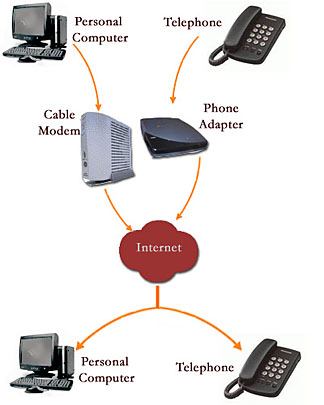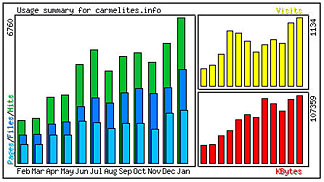|
no. 1 january - march 2007
The Vatican has released the message of Pope Benedict XVI for the 41 st Annual World Communications Day, to be celebrated on May 20, 2007. The Pope chose the theme Children and the Media: A Challenge for Education.In his message the Pope speaks of "The complex challenges facing education today are often linked to the pervasive influence of the media in our world. Indeed, some claim that the formative influence of the media rivals that of the school, the Church, and maybe even the home." "The relationship of children, media, and education can be considered from two perspectives: the formation of children by the media; and the formation of children to respond appropriately to the media. Training in the proper use of the media is essential for the cultural, moral, and spiritual development of children," writes the Pope. "Educating children to be discriminating in their use of the media is a responsibility of parents, Church, and school. Media education should be positive. Children exposed to what is aesthetically and morally excellent are helped to develop appreciation, prudence, and the skills of discernment." "Any trend to produce programs and products – including animated films and video games – which in the name of entertainment exalt violence and portray anti-social behavior or the trivialization of human sexuality is a perversion, all the more repulsive when these programs are directed at children and adolescents." "The Church herself, in the light of the message of salvation entrusted to her, is also a teacher of humanity, and welcomes the opportunity to offer assistance to parents, educators, communicators, and young people." World Communications Day, the only worldwide celebration called for by the Second Vatican Council, is celebrated in most countries, on the recommendation of the bishops of the world, on the Sunday before Pentecost (in 2007 on May 20). The announcement of the theme is made on September 29, the Feast of the Archangels Michael, Raphael and Gabriel, who have been designated as the patrons of those who work in radio. The message for World Communications Day is traditionally published in conjunction with the Memorial of St. Francis de Sales, patron of writers, on January 24. A link to the full text of the Message for the 41 st World Communications Day can be found at: carmelites.info/citocModern Technologies Open New Ways to Spread the Gospel God on the Internet, the Cell Phone, and Beyond With the Internet and other modern information technologies, it is becoming always easier to spread the Good News. The Church and other religious groups are taking advantage of a series of new instruments for transmitting their own message. According to an article authored by Fr. John Flynn and published on ZENIT.org, the Bishops’ Conference of the United States of America, for example, has made available on their website the audio recording of the daily mass. "The Internet today is part of our daily life and as such can be a means of helping us to enrich ourselves spiritually," said Archbishop George Niederauer of San Francisco, president of the Communications Commission of the US Catholic Bishops’ Conference. Some weeks ago, the religious publishing house Zondervan published a new audio version of the New Testament. It runs for 21 hours and has the voices of more than 250 people. In little more than one month, more than 70,000 copies have been sold. A similar recording of the Old Testament will be released later this year. In Asia, the Philippine Bible Society (PBS), an interdenominational not-for-profit organization, published an electronic version of the Bible. For use on a computer, the text is available in four English language translations and in all eight principal languages used in the Philippines. "We cannot permit that in these modern times of ours that the Word of God is neglected," affirmed a press release from the PBS. Another widely used electronic tool of communication is the cellular telephone. The pastor of the eighth largest Church in the USA, Harvest Christian Fellowship, has thousands of followers who pay to view brief clips of his sermons on their cell phones. Sony BMG Music Entertainment, better known for its music CDs of major international recording stars, formed a company division known as Integrity Media, a supplier of Christian services, to roll out MWorship. This service, among other things, sends texts of prayers to users. According to newspaper accounts, at least four companies have started providing religious content, including video for cell phones within the past few months. The same reports observed that already in 2003, the daily messages of the Pope were being distributed along with citations from the Scriptures. Catholic Mobile of Denver (USA), a cell phone provider, allows users to access the biography of the "Saint of the Day", the prayers of the day, and to a summary of the readings of the Mass each day in English and Spanish. The company promotes itself as providing "families and individuals with inspiring Catholic content that will enrich their daily wireless experiences." In South Africa, it is now possible to download the entire biblical text in either English or Afrikaans. That service is provided by a South African branch of the non-demoninational International Bible Society. The Zulu and Xhosa versions will be available shortly. Availability of the service in other languages is being developed. The use of cell phones for religious purposes is very popular also in Asia. The followers of Hindu god Ganesh send around 70,000 text messages, via cell phone, to the temple each week. In Europe, according to the newspaper Il Tempo, no less than 10,000 priest are registered on a website that allows them to download texts of the brievary. The material can be saved on the telephones or on an electronic Personal Digital Assistant (PDA). The site also offers access to the daily readings for the Mass which receives 240,000 visitors each month. Another initiative in Italy in called Preti on-line (Priests on-line) which offers an electronic answering service for the spiritual and moral questions sent by the users. The priests respond individually and privately to the questions sent in. Carmelite priest Santino Scopin, from Brescia, participates as one of the 870 on line priests. In many parts of the world, priests and religious offer various other kinds of on-line services. Most common perhaps is placing homilies on-line. Other ministers offer on-line meditations or biblical readings. In some cases there is also audio-visual content. After a short experiment at Glasgow University, some Scottish churches are now planning on installing webcams to allow the public to follow their religious function wherever they find themselves in the world. The sisters are also taking full advantage of the new technologies. A monastery of Poor Claire nuns in Dublin has used the internet to attract vocations. (See related article, p. 18) While the sisters remain in the monastery, the public is encouraged, through the monastery website, to send questions. Some months ago, the monastery of Clonard in Belfast, Northern Ireland, offered an on-line novena of Masses. The Novena of Grace Masses, which is celebrated simultaneously in five different locations in Ireland, normally attracts a few hundred people. According to Catholic Ireland.net, the monastery of Clonard alone had between 12,000 and 15,000 people participating at every daily mass celebrated as part of the novena. Following the event, Catholic Ireland.net reported that approximately 300 people followed each Mass by means of the Internet. The monastery, run by the Redemptorists, has announced that it will remain online permanently so that people can continue to follow the daily mass and other events. The new communications technologies, although many carry negative content, do offer priceless possibilities for evangelization and promotion of closer relationships between the users and God. Website of Catholic Ireland.net:
www.catholicireland.net
The technology that allows one to make voice calls using an Internet connection instead of a regular (or analog) phone line has existed for a number of years. Commonly called "Voice over Internet Protocol" (VoIP), the quality of such services has improved dramatically in the last several years. The benefit to members of the Order would be that contact can be made internationally at no cost or a very low cost. Some VoIP services, PC to PC calling, may only allow calls to other people using the same service. Other services, however, allow you to make calls from your computer to anyone who has a telephone number - including local, long distance, mobile, and international numbers. While some VoIP services only work over your computer or a special VoIP phone, other services allow you to use a traditional phone connected to a VoIP adapter. The number of companies now offering these services can be as mind-boggling as the variety of services provided. A little research is necessary to select the best solution to your situation. Lists of these companies are provided on the net, such as, in English, Directory of the Best Free Internet Phone Services. Many more extensive lists exist online in various languages. Full benefit of these services depends on clean, fast Internet connections. In geographical areas where the phone service is not reliable or utilizes old technologies, attempts to use this type of Internet phone service will only increase one’s frustrations. Most VoIP providers strongly recommend a cable, DSL or similar broadband connection. A few companies suggest that a dialup ISP with plenty of capacity and a good connection to the Internet itself will work. However, it is difficult to find users who have actually experienced success with VoIP utilizing a dialup ISP. Since the last General Chapter, the members of the Curia have experimented with several strategies to reduce the cost of long-distance calls. Most common was the purchase of phone cards which allowed for several hours of calls at a much reduced cost. The value of VoIP was brought home to the Prior General, Joseph Chalmers, when the VoIP software he had installed on his computer notified him that the Carmelites in Mozambique were attempting to call him over the computer. "Previous to this, it had been very difficult to make contact with Mozambique. Here this computer program made it possible to connect with them easily and we had a chat for free," said the Prior General. This is the ability to call from your computer to another computer while connected to the Internet. In addition to a good Internet connection, your computer must have speakers and a microphone. There are drawbacks to PC to PC calling. The person you are calling not only needs to be online but they need to be running the same Internet phone software you are. For example, if you are using the popular software program Skype to make your call, the person’s computer you are calling must also have Skype and the person must be signed on to the program. The sound quality of your call is dependent on your connection speed and the other person’s connection speed. If the connection is slow or there is a lot of traffic at just one end, it may be impossible to hold a conversation. There is generally no cost associated with these programs and most can be downloaded from the Internet and used within minutes. A newer development is the possibility of utilizing one’s PC to call standard (analog) telephones. When using this service, the caller is the only one who needs any special setup. The person being called just needs to answer the phone. Typically the speed of the computer’s Internet connection will be the only limiting factor. As in PC to PC calling, here too sound quality varies. The audio tends to be much better if one has a faster connection to the Internet itself. For the more adventurous, some of these programs provide a variety of ancillary services including call waiting, call transfer, call answer, call scheduling and some support voicemail in which one can create multiple user mailboxes, a public mailbox, send instant voice messages, listen to messages, utilize call screening and limited message duration. Charges for these services vary from no cost to a few cents per call to higher charges, depending on the range of services used. "I have found VoIP very useful. When I first heard about it, I was rather sceptical. It sounded too good to be true. I now use this system for most of my business and rarely use the normal phone" concluded the Prior General. Suggested Resources: Does Anyone Read Carmelite Websites? Each Internet website has the possibility of collecting a mountain of information about itself, the people who visit, and their "surfing" habits while on the website. Much time and energy has been spent developing websites about the Order, our history, our spirituality, our foundations, and our members. But do people actually read these pages? A website in the three languages of the Order, the Index of Carmelite Websites, was developed by the International Communications Commission, with the cooperation of webmasters in the provinces and monasteries, over the last 4 years. Statistics are provided by the outside company which "hosts" the website for visits to each of the three languages. "The importance of the Order developing a presence on the Internet certainly seems to be justified," said William J. Harry, O. Carm., the General Councilor responsible for the Order’s program of communications. "The number of visitors to Carmelite sponsored websites is increasing. We should capitalize on this interest. But we need to realize that this interest will only continue if we continue to develop professional, interesting, informative websites." The English version of the website is the most popular, reflecting perhaps that English is the most popular language on the Internet. In December 2005, there were 2694 "unique" visitors (only the first visit during the month is counted) to the website. One year later, in December 2006, the visits of "unique" visitors to the website increased to 4509, an increase of 167%. In May 2006, the website’s busiest month of the year, 7,453 "unique" visitors used the website. In a total of 6286 visits, people spent an average 147 seconds on the website. Slightly more than 91% spent less than four minutes viewing the page, which is perhaps longer than expected for an index website but reflects the short viewing time typical of websites. The most popular web pages on the site are links to CITOC, Edizioni Carmelitane, and the Carmelite NGO. The most popular "search keyphrases" (of 1275) are Carmelites, Domus Carmelitana, CITOC, Carmelite hermits, Institutum Carmelitanum, and the NGO website. The Italian net was kept busy with 1022 "unique" visitors in December 2006, an increase from 894 one year before. Each visitor to the Index made 9.42 hits (a request for information from the website) per visit, also an increase over the last year. The busiest month for Italian website was May with 1662 "unique" visitors. Visitors arrived at the Italian version of the Carmelite web index from the recently established OCARM-OCD website, the websites of the Carmelite monasteries in Carpineto Romano and Biella, the Madre Crocifissa website, and, somewhat surprisingly, a Spanish website. Information was sought with the "search keyphrases" carmelitani, eremiti, Domus Carmelitana, Carmelitane, Edizioni Carmelitane, monache, Maria Teresa Scrilli, and CITOC. The Spanish version of the Carmelite Index experienced a slightly smaller increase in traffic with 1382 "unique" visitors in December 2006, up from 1170 one year prior. The busiest month for the website was October 2006 with 2020 "unique" visitors. In December 2006, each visitor on average viewed six different pages within the carmelitani.info website each time they visited. This was also a slight increase over the previous year. A large number of visitors arrived at the website from external links on provincial websites or from monastery websites, including non Carmelite monasteries. Several came from a link in a "blog" in Spain. Several visitors also came via the OCARM-OCD Website. The most popular "search keyphrases" were carmelitas, monjas carmelitas, CITOC, eremitas, eremitas carmelitas, Domus Carmelitana, and monasterios carmelitas.
 The "CNN of the Pope" Launched The "CNN of the Pope" LaunchedNew Video News Service on the Internet In December, the Vatican launched a new television service which is distributed over the Internet. The new service is being called a video version of the popular online Zenit News Agency, a project launched in 1998. The new "H2O" broadcast service is foreseen as making video news reports available through the Internet, cell phones with video capabilitites, as well as traditional communications such as television. The project was formally presented during the Vatican’s World Conference of Catholic Television Providers in Madrid, Spain in October 2006. The name of the new agency, H2O, refers to water as the symbol of life. The service will start with five daily news items lasting 90-120 seconds each. Two will be about the pope. Two will be focused on the international church. One will be of artistic or cultural interest. The Vatican Television Center will provide some content. The service is being provided free of charge to Catholic television networks and to Internet users. Provided funding can be found for the financially self-sustaining service, initial test videos were to begin in January, with the full service to initiate in March. Zenit, a text-based news service in several languages is offered daily to some 240,000 subscribers via email and the internet. The Vatican spokesperson, Jesuit Federico Lombardi, in response to articles about the new service published in Italian newspapers, stated that the Vatican, while supportive of the new venture, is not responsible for it. However, he went on to say that the new service would broadcast between five and ten news stories daily. He sees the new service beginning around Easter time. He also clarified that there is no connection between H2O and the Legionaires of Christ. The H2O Website is: www.h20news.tv |
|
RETURN TO THE INDEX FOR 2007 | RETURN TO THE INDEX FOR THIS ISSUE INDEX OF CARMELITE
WEBSITES |


